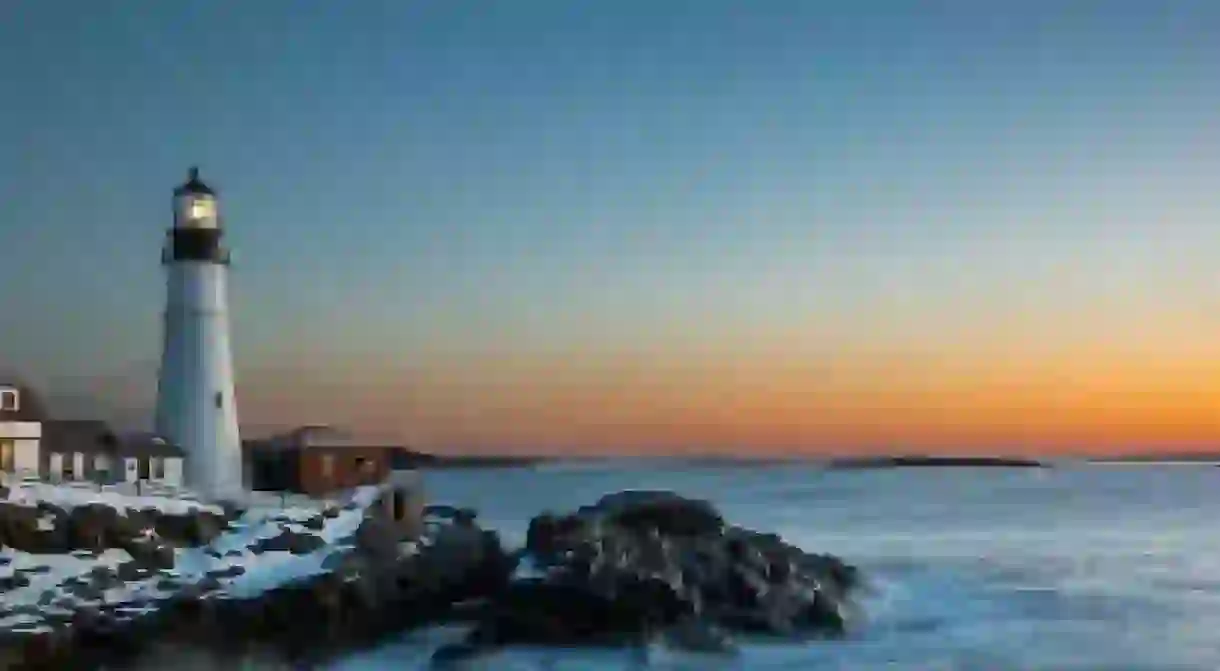Maine’s Lighthouse Trail Highlights The Proud Icons of the Lighthouse State

The lighthouses that dot Maine’s rugged coastline are proud monuments of the state’s maritime history and have inspired its nickname, the ‘Lighthouse State‘. We look at some of the most stunning and historic lighthouses along Maine’s Atlantic Ocean coastline, from the Portland Head Light to the eerie Boon Island lighthouse.

Dotted along the jagged coastline of the most North-Easterly state of the US are dozens of lighthouses, from just over the New Hampshire border, where the Whaleback Light sits in Fort Foster Park, Kittery, to the West Quoddy Head Light that is located on the most easterly part of the USA – so far east in fact that, at certain times of the year, it is the first object in the country to be touched by sunlight. All of them peer out over the ocean with the original intention to signal to passing ships how close they are to the rocks and cliffs of Maine.

With more than 60 towering over coastal regions of Maine, around 57 of which are still fully operational, it does not come as a surprise that they have become intrinsically linked with the iconography and history of Maine.
The oldest of these lighthouses was built in 1791 at Cape Elizabeth and is known as the Portland Head Light. The first US lighthouse completed after the United States gained their independence from Great Britain, it is still in use, with the lamp and foghorn being maintained by the US coast guard as it sits at the entrance to the primary shipping channel into Portland Harbor. Built under the instruction of George Washington, the lighthouse became unintentionally integral to the American Civil War as it guided ships safely in and out of Portland Harbor. The former lighthouse keeper’s house is now a maritime museum situated within Fort Williams Park.

Alternately there is the newest of the lighthouses, the second Whitlocks Mill Light, which also happens to be the most northerly light in the state, and was first lit in 1910.
Not all of the lighthouses are on the shoreline of mainland Maine. The Seguin Island Light, for example, sits on an island that is six miles out to sea and is in a location so foggy that it spends almost a third of the year surrounded by it. It was the state’s first island light although there are now many other island lighthouses of Maine, including the Monhegan Island Light, the Curtis Island light and the Boon Island.
In fact, the Boon Island lighthouse happens to be the tallest of the towers in Maine, although it is not the highest lighthouse, as that award goes to the aforementioned Seguin Island light, which stands at 180 feet above sea level. Boon Island itself is so inhospitable that the first two towers built on the island were swept away. Despite this, the lighthouse was manned right up until the blizzard of 1978, which blew away the lighthouse keeper’s quarters, the boathouse and the supply building, leaving the lighthouse keepers to fend for themselves for two days as they took shelter in the lantern room and waited to be rescued by the US coastguard. It is now, perhaps wisely, powered by a large solar panel.
Lighthouse preservation within the state is operational largely due to the Maine Lights Program, although many Lighthouses are owned by either the US coastguard or the US Fish and Wildlife Service. Some lights had been sold to private owners, the most notable of which was the visual artist and realist painter Andrew Wyeth, who purchased the Tenants Harbor Light in 1978. Both he and his son Jamie Wyeth, also a renowned artist, have gone on to depict the light in their paintings.

Of course, although their primary objective is to warn ships of the nearby rocks some of the lighthouses have witnessed many shipwrecks like the Owl’s Head Light that sits high atop a cliff at the entrance to Rockland Harbor.
This is something that did not often occur under the watchful gaze of the state’s most powerful light at Cape Elizabeth. Known as ‘Two Lights’ there were originally two stone towers in operation until, in 1874, they were replaced by a 65-foot cast iron tower. The candlepower light that emanates from the tower is so bright that it is visible from around 27 miles away.
Many of the keepers’ houses, like that at Cape Elizabeth, are now private residences but some have become museums like the one in West Quoddy, or the keeper’s house of Rockland Breakwater Light, which has now become a lighthouse museum holding a collection of magnificent lighthouse lenses.
An undeniable part of the rich fabric that makes up Maine’s heritage, every last one of these lighthouses is picturesque in its own unique way, and each is part of the stunning vistas of the landscape by which it is surrounded. An indomitable part of the state, they remain standing tall, guiding the way for ships and travellers into Maine.













